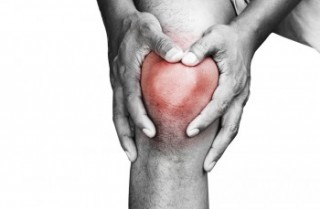 Your chiropractor can help with many sports related injuries, including runner’s knee. Runner’s knee, also called patellofemoral pain syndrome (PFPS), is one of the most common injuries suffered by runners. Its main symptom is a dull pain that is felt mainly around or behind the top of the kneecap. There are many theories about the origin of PFPS, but recently more attention has been paid to the relationship between the knee and the hips.
Your chiropractor can help with many sports related injuries, including runner’s knee. Runner’s knee, also called patellofemoral pain syndrome (PFPS), is one of the most common injuries suffered by runners. Its main symptom is a dull pain that is felt mainly around or behind the top of the kneecap. There are many theories about the origin of PFPS, but recently more attention has been paid to the relationship between the knee and the hips.
Can Chiropractors Help With Runner’s Knee?
PFPS is more common in women than in men. An earlier theory suggested this could be because women’s hips are wider than men’s, but the width of the hips does not seem to be directly related to knee pain. Other theories suggested that runner’s knee pain could be caused by differences in the length of the runner’s legs, but again it seems this is not an adequate explanation.
The pain occurs when the patella (the kneecap) rubs against the femoral groove. Movements that aggravate the problem include running, walking down stairs, sitting for long periods of time and squatting.
Causes of Patellofemoral Pain Syndrome
Some factors that can increase the risk of PFPS include lack of flexibility in the calf muscles and in the quadriceps. In the recent years, research into runner’s knee has found a new factor that could be more important than previously thought. The mechanics of the hips can have a large role to play in knee pain and knee injuries, including PFPS.
This could also explain why women suffer from PFPS more than men; it does not necessarily have anything to do with wider hips, but with weakness in the hip abductors as well as the external rotators. These weaknesses affect the way you run, and changes the position of the knee while you are running. The femur rotates under the kneecap and if the knee collapses in the direction of the body while you run, this movement could over time lead to PFPS.
How a Chiropractor Can Help
So what can bring relief from runner’s knee pain and are there ways to prevent it? Some studies suggest that strengthening the hips can help. Exercises that include strengthening the quadriceps, as well as the external rotators and the hip abductors, are important and helpful. Balance training can be useful too, and general strengthening of the hips can prevent future injuries.
Stretching is usually a good idea, especially if the quadriceps and the calf muscles are weak or lack mobility. While you may have to take a break from your usual running schedule, stretching at home will relieve or prevent stiffness and loss of mobility. It is important to stretch in a way that does not injure the knees more, so it makes sense to talk to a professional fitness instructor or a chiropractor about suitable stretches.
Recovery Time
It can take weeks or months before you can return to your normal running routine. Recovery can sometimes be slow, but running too early can delay the healing and cause further injuries. How long you might have to rest depends on how long you have had the injury. Your chiropractor or physiotherapist can help to estimate the time your recovery might take. You can try other activities while recovering as long as they do not hurt the knee or intensify the existing pain.
As with most knee injuries, it is necessary to be patient while you are healing. It can take time to heal the knees and it is important to build your running schedule back slowly. Your chiropractor can show you hip strengthening exercises that can bring relief from the pain.

